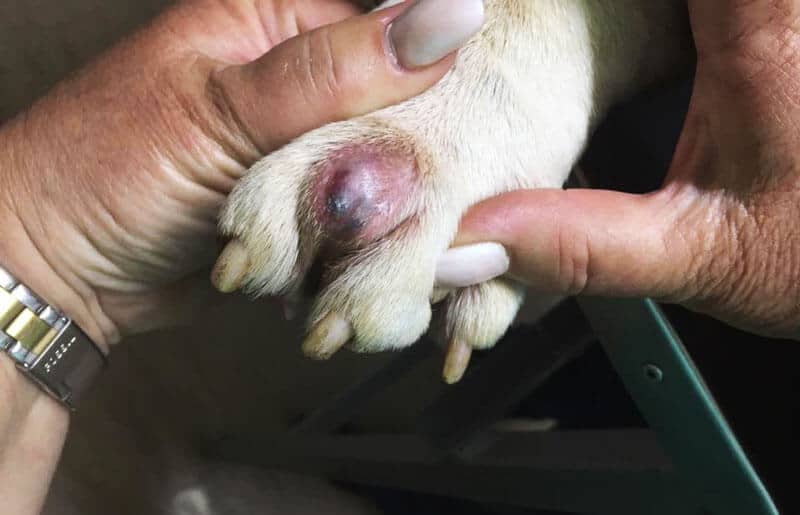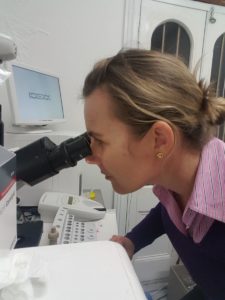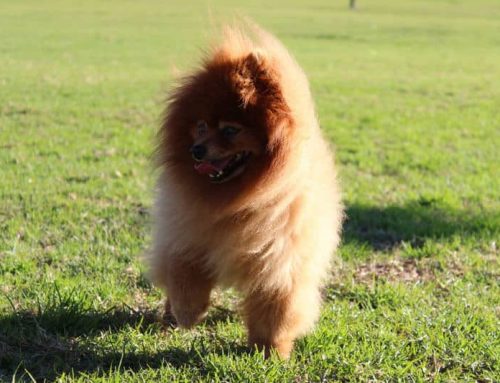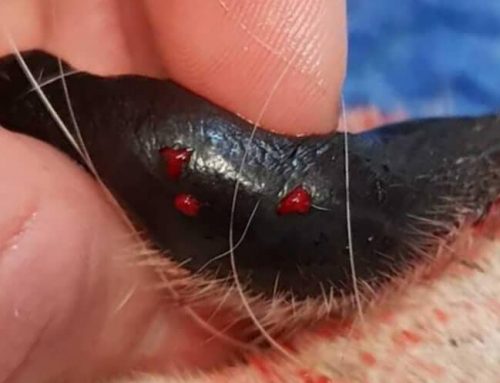What To Do When You Find A Lump On Your Dog Or Cat
Finding a lump on the skin of our dog or cat can be a little frightening.
What if it’s cancer?
Thankfully many skin masses are benign, however, it’s impossible to guess just by looking whether a skin mass is a benign tumour or a malignant tumour.
Guessing incorrectly or delaying performing a diagnostic test, can have devastating consequences.
Determining what a skin mass is, is vitally important so that you know what the mass is and can decide what the best course of treatment is for your pet.
In this article, we discuss what you need to do when you find a lump or bump on your pet and how a vet will then diagnose what it is.
Make sure you download our free body skin map resource so you can be sure that your pet’s lumps and bumps are being monitored appropriately.

Could The Lump Be Skin Cancer?
Before we get carried away and start stressing there are many potential causes of lumps and bumps and it is pretty much impossible to tell if something is skin cancer without doing further testing.
We can put the lumps and bumps in categories: those that are cancerous or “malignant” and those that are non-cancerous or “benign”.
Benign Skin Masses
Benign skin masses are those that don’t invade or spread in the way that cancerous or malignant cancers do. Benign tumours often have a good prognosis, but they can sometimes cause serious problems if they press on vital structures such as blood vessels or nerves, or if they get too big.
Malignant Skin Masses
Malignant skin masses require treatment and depending on when they are discovered prognosis can be great i.e. curative or we might need to think of palliative care.
The important thing to remember is we NEVER know if a lump or bump is cancer until we do some tests.
What Tests Do Vets Perform To Diagnosis Lumps And Bumps
The most important thing that you can do and that your vets will do is to palpate your pet’s whole body and record every single lump or bump you find.
When feeling your dog or cat all over I want you to download the Skin Body Map and record everything you find:
- feel all parts of the body from nose to tail, around the mouth, ears, eyes, between toes, under tail, mammary glands and around rectum
- record any lumps you find on the skin body map
- get a rule and measure the length and width of the lump, record the date that it is this size.
- if any lump or bump is BIGGER than a pea i.e. 1cm you need to visit a vet. Take the Body Map with you.
When a vet sees the lump or bump they will often advise that a FNA or fine needle aspirate is performed. If the vet doesn’t suggest this, please ask them why and suggest they do.

Example of a portion of a skin body map for dogs. Download the full one to record your pet’s lumps and bumps on skin.
Fine Needle Aspirate
This is a procedure where a few cells are removed from a lump and examined under a microscope.
The majority of the time vets won’t need to sedate your animal for this procedure unless of course, the lump is somewhere awkward to get too (like on the face where you want them to keep very still) or the pet is a bit rambunctious.
A very small needle is inserted into the lump and cells are drawn off. These are then placed on a slide and stained a special colour.
We then check the cells under the microscope.
We are looking for signs that are suggestive of malignancy (see diagram above). If the vet notices that the cells are abnormal, they will send the slide off to a pathologist who will then give an opinion on what they think the cell type is.
Biopsy
Vets perform a biopsy when we either have been unable to get sufficient cells from a FNA or we want to take a bigger representative sample.
Biopsies may be performed under anaesthesia or sedation and sometimes without anything.
The samples are put in formalin to be fixed and sent to a pathology laboratory for examination. Results return in about 3 to 5 working days.
Why Test The Lump?
It is very important for us to know what the lump or bump on the skin is so we can generate a plan for removal and further treatment if required.
If the initial lumps show that the lump is malignant then we need to do further tests to find out the extent of the spread of cancer.
Depending on the type of cancer involved your vet might recommend the following further tests prior to any surgery to help with staging the disease:
- radiographs
- CT examination
- MRI examination
- blood tests
The goal for all surgery involving lumps and bumps is to do it once and do it right. We don’t want to be repeating surgeries unless we really have to.
Final Recommendations
Lumps and bumps under skin need to be tested by either biopsy or a FNA to determine if they are cancer.
Anything bigger than the size of a pea i.e. 1cm requires testing.
Removal of many malignant lumps and bumps early is curative, so please monitor your pets monthly for lumps and bumps.
For further information, we have a video tutorial called “When do we worry about lumps and bumps on skin of our pets?”
Download our skin body map so you can monitor your pets at home. If you have any questions about lumps and bumps on your pets our online vets are available 24/7 if you wish to show us what you are looking at.






Leave A Comment